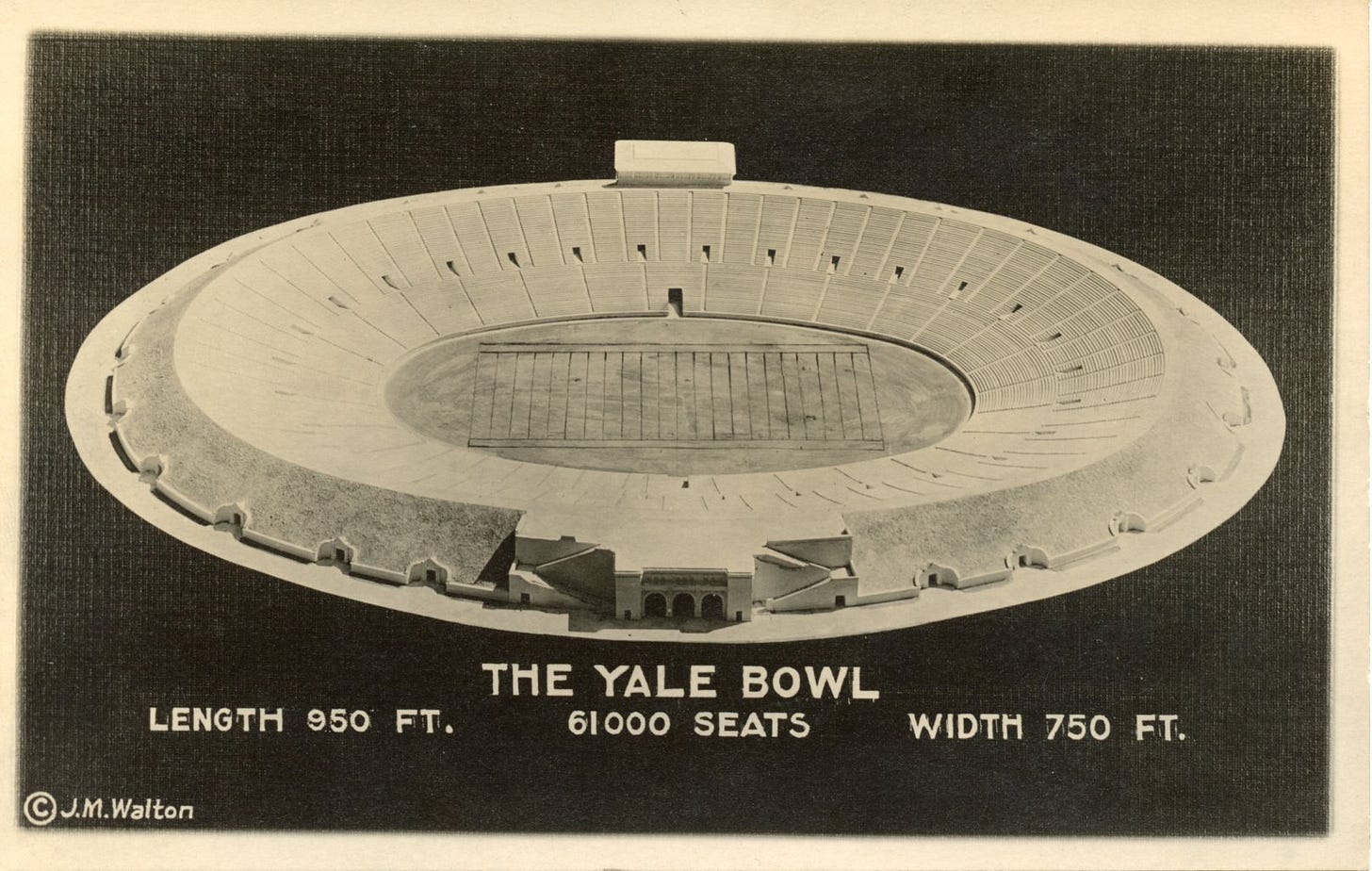Today's Tidbit... Opening Day at the Yale Bowl
The construction and opening of the Yale Bowl were watersheds in college football and American sports history. Substantially larger than any stadium in the country, it's opening in 1914 demonstrated Yale's commitment to football after a decade of tumultuous rule changes.
The highest capacity football stadiums in 1913 were at Harvard (42,000), Syracuse and Penn (30,000), and Yale, where Yale Field held 33,000 in its wooden bleachers. The Polo Grounds in New York held 55,445, though most major league parks sat fewer than 15,000. Weeghman Park, now Wrigley Field, held 14,000 when it opened in 1915. Meanwhile, the Yale Bowl held 68,000 on opening day.
While the Yale Bowl was a great stadium in many respects, only 35 percent of its seats were between the end zones, so many fans were distant from the action. Nevertheless, when 71,000 showed up at the Yale Bowl for its opening and a 36-0 shellacking at the hands of Harvard, they set the record for the largest crowd to attend a sporting event in American history.

Football Archaeology is reader-supported. Click here to buy one of my books or otherwise support the site.


